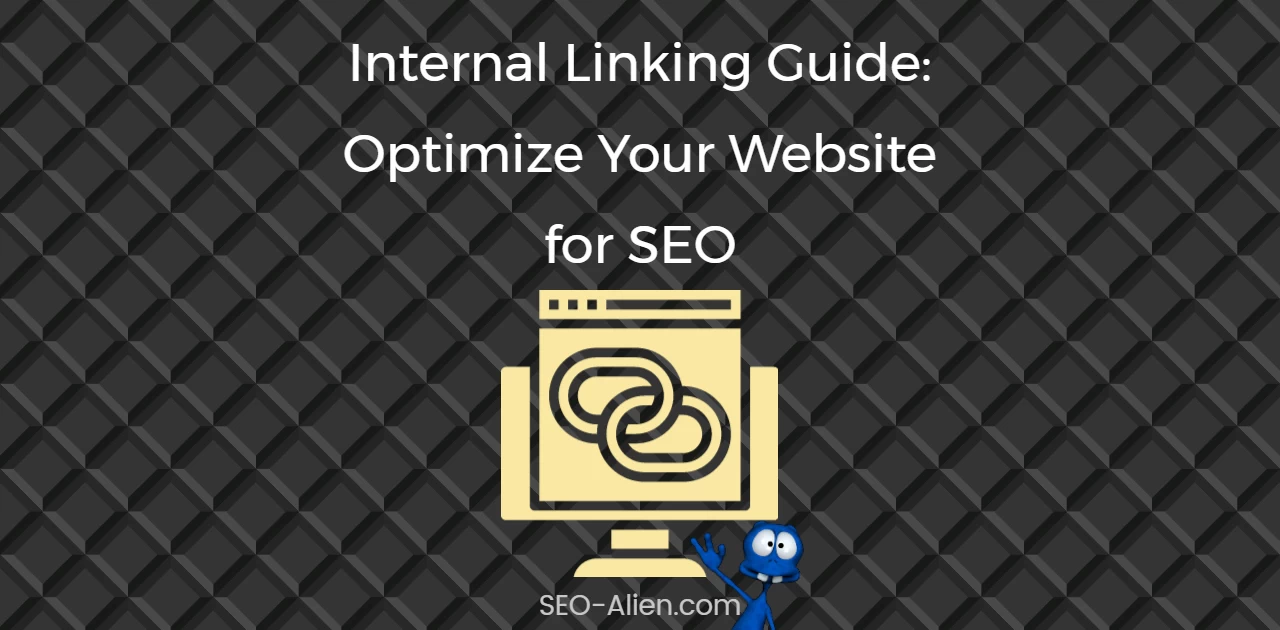Lorem ipsum dolor sit amet, consectetur adipiscing elit, sed do eiusmod tempor incididunt USD730927857 ut labore et dolore magna aliqua. Ut enim ad minim veniam, quis nostrud exercitation ullamco laboris nisi ut aliquip ex ea commodo consequat.
If you're an online marketer, website designer or any online business owner with a website, it is vital that your website is properly optimized for search engine optimization (SEO) so consumers can easily find and engage with your product and services.
Internal linking plays a critical role in SEO because it helps to create pathways between pages on your site.

Made with DesignCap
The internal link structure of your website enables both users and search engines to navigate it more effectively – meaning better chances for higher rankings! To guide you through the process of optimizing for SEO using internal links, our experts at SEO-Alien have created this comprehensive internal linking guide that covers everything from best practices to useful tips and tricks. So get ready to learn how proper internal link structure can help make sure consumers are able to discover all the wonderful features of your website – let’s dive in!
What are Internal Links and Why They’re Important for SEO
Internal links are an essential component of search engine optimization, but what exactly are they? Simply put, internal links are links within a website that connect pages and content to other relevant pages and content on the same site. These links are important because they allow search engine crawlers to discover and index new content, ultimately improving the overall search visibility of a website. In addition, internal links help users navigate a website more effectively and can improve the overall user experience. As an expert in the field of SEO, it's crucial to understand the importance of internal linking and how to use it to boost the visibility of your website.
How to Identify Good Internal Linking Opportunities
To identify good internal linking opportunities, you should start by reviewing your existing content and identifying pages that you want to rank higher. Look for natural opportunities to link from those pages to other relevant content on your website.
You can also use tools like Google Analytics and SEMrush to identify pages with high traffic or authority and connect them to other pages on your site to improve their overall search engine ranking. Basically, you should aim to link from high-authority pages to other content on your website wherever possible.
Once you’ve identified linking opportunities, then tools like Ahrefs or Moz Pro will help you analyze your internal links and get an understanding of how they affect the SEO of your site. This data will help you better understand how your internal link structure affects the user experience and search engine rankings.
Tips for Optimizing Internal Links for SEO
By following a few simple tips, you can optimize your internal links and elevate your website’s SEO.
- Ensure that your internal links are relevant and add value to your content.
- Use descriptive anchor text that accurately describes the destination URL.
- Organize your internal links in a hierarchical structure to aid in the natural flow of your website.
Common Mistakes to Avoid When Creating Internal Links
Many people make mistakes when creating internal links, which may affect their site negatively. Here are the 3 most common ones.
- One of the most common mistakes is using vague or irrelevant anchor texts, as this confuses both users and search engines.
- Another mistake is adding too many internal links in a single article, which leads to keyword stuffing and a poor user experience.
- Additionally, broken links and redirect errors are common mistakes that negatively impact your site's visibility and ranking.
Therefore, it's crucial to learn the best practices for internal linking and avoid these common errors to boost your site's success.
Best Practices and Tools to Help You with Internal Linking
Using best practices and tools to help you with internal linking can make a significant difference in the success of your website. Practice keyword-rich anchor texts and use relevant, related web pages.
Besides, inserting internal links in your content strategically can make your website more user-friendly and improve page views. Some tools that can help you manage your internal linking process include Linkwhisper or SmartCrawl Pro by WPMU DEV.
Maximizing the benefits of internal linking requires meticulous attention and analysis. However, the convincing results concerning website ranking, user experience, and content performances justify every effort put into it.
To Sum it All Up
Internal links are a crucial part of any website’s SEO strategy. Not only do they help search engines to better understand the content on your site, but also allow visitors to easily navigate from one page to another. When used correctly and strategically, internal linking can make a huge difference in how well your website performs in search engine results pages (SERPs). Don't forget that you should always use relevant keywords when creating an internal link.
At SEO-Alien, we encourage all digital professionals to explore their internal link options in order to get the most out of their investments and maintain a competitive edge. So before you dive too deep into overhauling your current website optimization strategies, make sure you check out Linkwhisper or SmartCrawl Pro by WPMU DEV – two great tools to help take your website to new heights!
About the Author:
The SEO-Alien is a project started in 2009 regarding all things online marketing. The site started out more of a diary of predictions, suggestions and references to things I frequently used for online marketing... before social media marketing was even an option.
I hope you find the information and tools presented here useful and something worth sharing with others.
If there is anything else about online marketing or any online advertising strategy you think would be helpful, please let me know.





